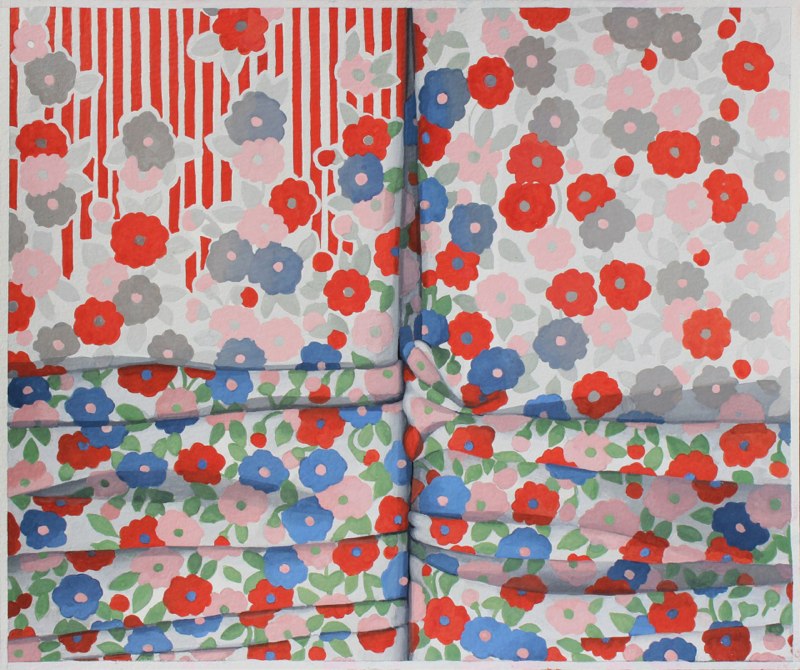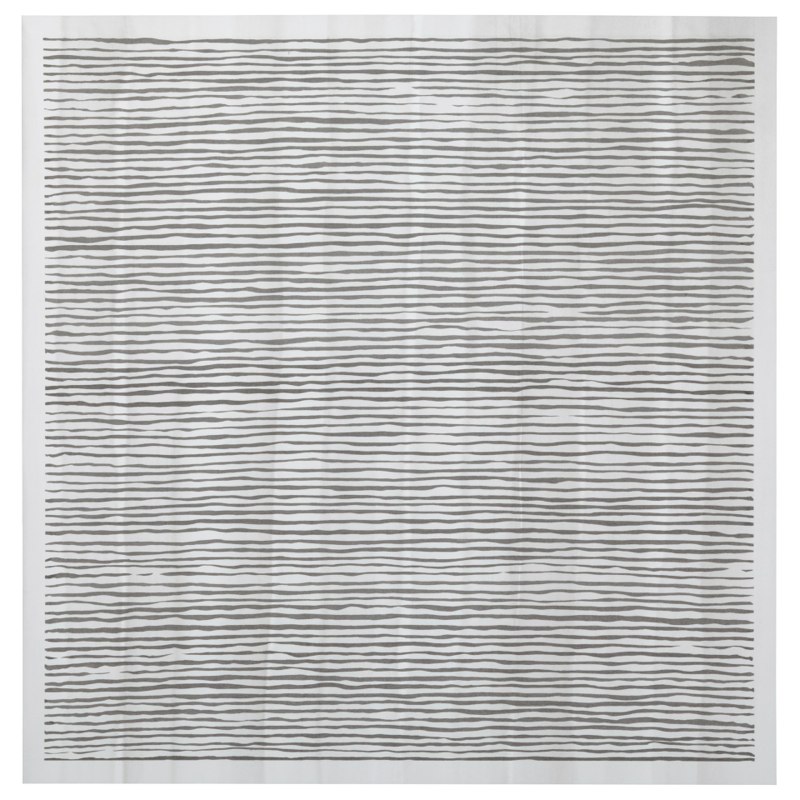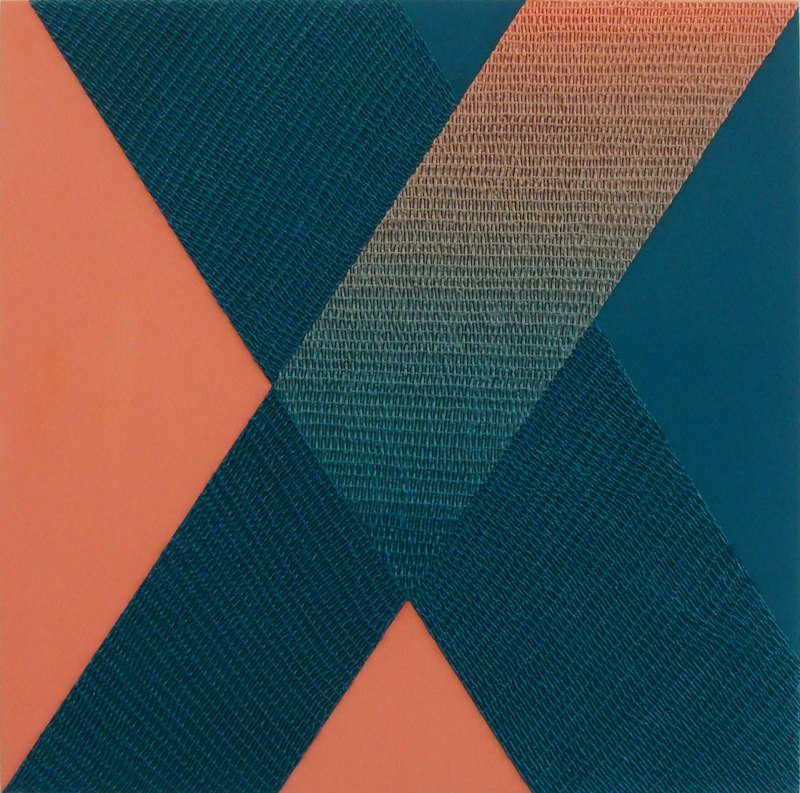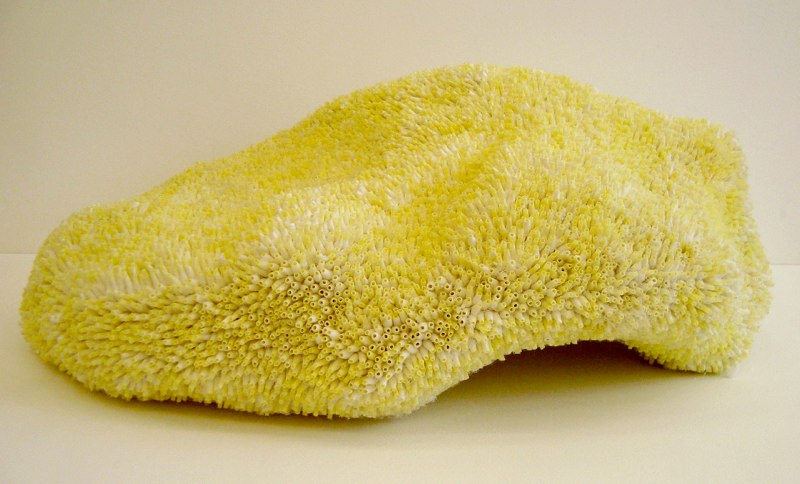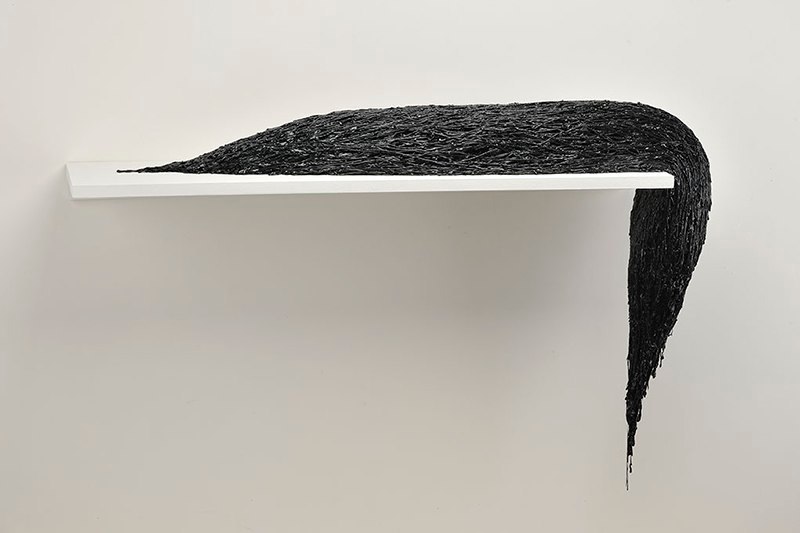CUMULOUS: Leeza Doreian, Lisa Espenmiller, Danielle Mysliwiec, Sandra Ono
AUGUST 3, 2012- SEPTEMBER 28, 2012
Leeza Doreian Bright Light, Daylight, 2012 oil on mounted linen 12.5 x 12 x 2.25 inches
Cumulous presents the work of Leeza Doreian, Lisa Espenmiller, Danielle Mysliwiec and Sandra Ono, four artists whose work results from the accretion of marks, gestures or material. Inherent in all of their working processes is repetition, which creates patterns of various forms.
Leeza Doreian paints “still lifes” comprised of thrift store fabric. She first arranges the fabric, deliberately folding or smoothing it into form. She then convincingly re-creates the “scene” in oil or gouache, including the painstaking work of rendering the fabric’s machine-made graphic patterns. The mass-produced and discarded cloth is transformed into carefully handmade paintings. Through cropping, flattening and simplifying—the artist’s means of exhibiting the mental order with which we view the world—Doreian’s images hover intriguingly between geometric abstraction and representation.
While Doreian’s images represent actual fabric patterns, Danielle Mysliwiec’s paintings disguise themselves as woven textiles. Constructed of untold strands of oil paint applied in tiny organized rows, Mysliwiec’s paintings defy what we think we see. Their intricate textures, geometric compositions and reduced palettes take full advantage of light and shadow, the play of which reveals their structures and shifts their appearance from moment to moment. The paintings’ meticulously built surfaces embody the artist’s cumulative actions, implying the methodical passing of time.
Sandra Ono considers her cumulative process of making sculptures a “physical documentation of time.” Ono amasses material, often from everyday consumer products, to create abstract, body-like forms. Bits of Q-tips, aluminum foil, dental floss, puffy paint or rubber bands come together to form thick, textured skins or solid objects. Their animated quality suggests creatures or other forms of life. Resonating in the psyche, they range from endearing to disturbing. These psychological undertones relate Ono’s work to Surrealism, while Post-Minimalism is called to mind when one considers their reliance on the evocative properties of materials.
Lisa Espenmiller draws horizontal ink lines, one after the other, until the entire surface of canvas or paper becomes a striped color field she relates to “chi” —the subtle energy that infuses existence, which can become evident through the process of meditation. Although on a formal level, her work has ties to the linear compositions and subtle hues of Agnes Martin’s paintings, Espenmiller’s art practice is less influenced by the work of other artists than it is an extension of both her writing practice (she is also a poet) and her Zen meditation practice. Her multi-disciplinary aim is to “encourage stillness and a focus on the moment at hand.” She achieves this with her paintings and works on paper, which require the artist’s own sustained attentiveness while inspiring calm and contemplation in the viewer.
















